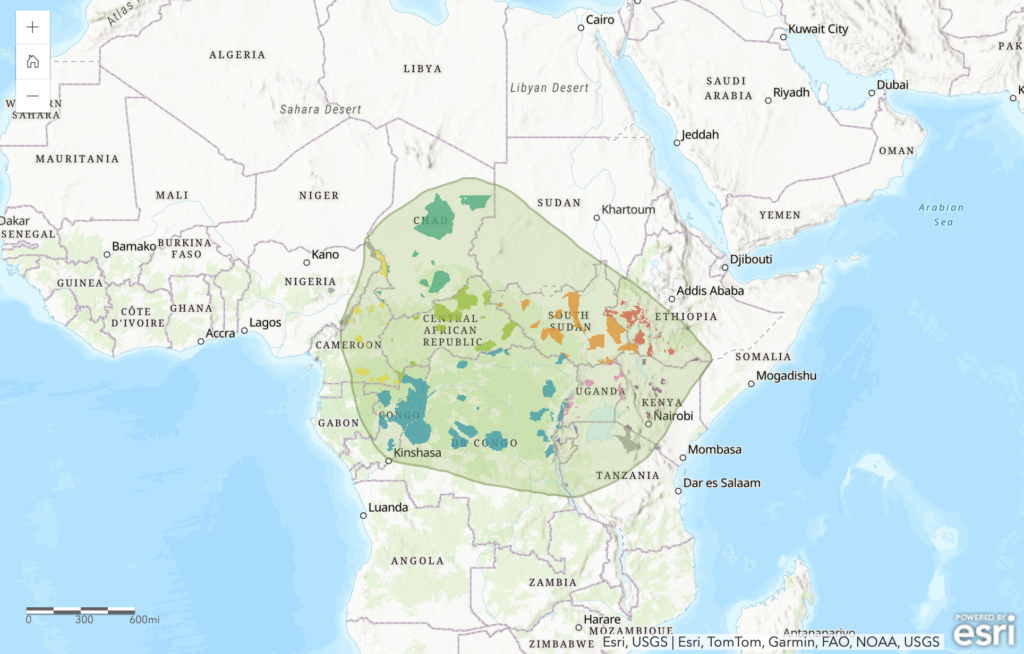Africa World Park
One candidate for the Africa World Park contains the Congolian rainforests, which stretch across the heart of Africa across six countries. They are home to some of the largest expanses of natural landscape and pristine rainforest in the world.
As increasing human populations and industrial activities creep further into this ecosystem, it becomes even more important to conserve it. The area stretching from Cameroon and Gabon through most of the Democratic Republic of the Congo is an ideal candidate for a World Park due to its limited infrastructure, high ecological and biological diversity and global potential for mitigating climate change.
Scroll down to explore how World Parks, Inc. is working to create one possible version of the Africa World Park.
While not many people are aware of the Ituri Forest or Garamba National Park, these protected areas are vital for maintaining the ecological balance that has taken generations to perfect. However, connecting these and many other existing protected areas (as seen highlighted here) would create a massive intact ecosystem.
By building off of existing conserved and protected areas, we are expediting the process of large-scale landscape conservation by filling in the missing areas of interest.
Based on an assessment using data from the UN Environment Program and the Integrated Biodiversity Assessment Tool, this proposed World Park would include over 5,500 species on the IUCN Red List, over 1,200 existing protected areas and more than 200 Key Biodiversity Areas.
Scroll down to explore how World Parks, Inc. is defining a potential Africa World Park.
Ecologically speaking, it is more beneficial to have larger, connected areas of protection than to have smaller, disjointed areas.
The Africa World Park will be a bold and innovative solution to environmental protection and international cooperation.
The Africa World Park will cross international borders and cover over 1,000,000 square miles of primary forest, river systems and mountain regions.
We see this as necessary to ensure the world meets the conservation goals set out by the global scientific community.


